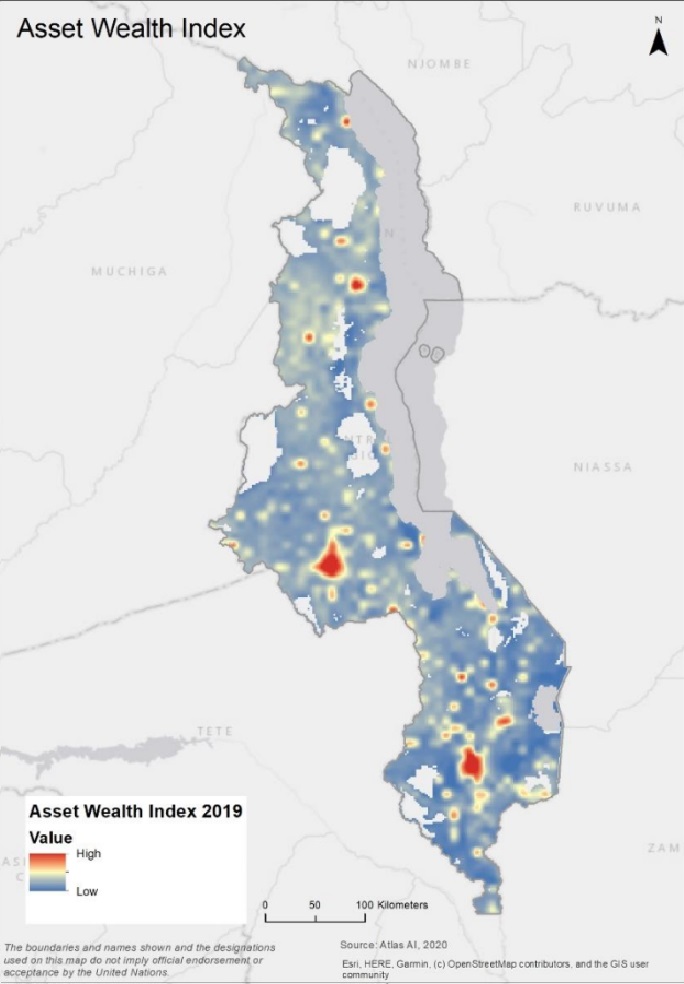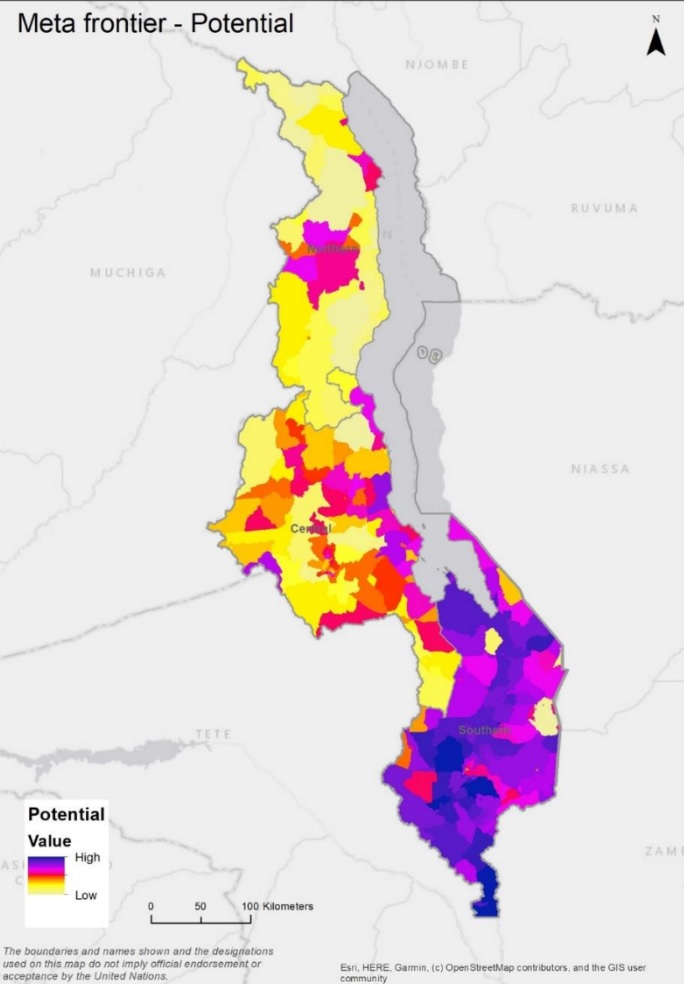INVESTMENT PRESENTATION
THE PROPOSAL
The Government of Malawi is committed to improving agricultural productivity and commercialization as stipulated in the national agenda, Malawi 2063. The hand in hand initiative is currently supporting the nation’s vision by providing evidence-based solutions in transforming the agricultural sector. The initiative has assisted the Government of Malawi to identify options and priority areas in agriculture and food systems. The Government has so far focused on investments in all the three regions in the country. The investments being proposed are along the following areas:
a. Production and productivity
b. Value addition and processing
c. Post-harvest management
These investments have been proposed to be implemented across the micro-regions in the country, depending on the potential of each identified value chain. The locations have been informed by the typologies analysis, that has been used as a guiding tool for investment decisions, using the country’s bio-physical and socio-economic data. Traditional donors like the European Union, the United Kingdom Government, the Government of Flanders, the World Bank, and the African Development Bank; as well as implementing partners like the Food and Agriculture Organization of the United Nations through ongoing initiatives like One Country One Priority and projects such as KULIMA, PROSPER and AFIKEPO, are already making significant contributions to the value chains. A private sector led approach will therefore complement the commercialization efforts.
Poverty
Potential
Efficiency



COMMODITIES AND INTERVENTIONS
Fish production is at 163,766 metric tons of which lake catch dominates this sector. On the other hand, aquaculture only accounts for 9,230 metric tons of the catch. However, the sector faces post-losses due to lack of a processing facility. Annual fish post-harvest loss is at 37%. Further, the demand for fish is augmented by imports of fish, which was pegged at $9 million between 2017 and 2021. Concurrently, the cost of production under aquaculture is high given that the country imports fish feed. Therefore, a fish processing model and feed mill have been proposed to address the challenges. A Public Private Partnership (PPP) model called Build Operate and Own is suggested for the proposed investment. A fish processing plant will be built in Mangochi, Salima and Nkhatabay with a processing capacity of 10 tons per day. the fish feed mills with a capacity of 5 tons/hour to process fish feed will be established in all the three regions. The total investment required to achieve this is USD126.8 million with 6,669 direct and 30,000 indirect beneficiaries. The net present value is USD24.4 million for the fish processing plant and USD3.1million for the fish feed mill. The internal rate of return is 29% for the processing plant and 39% for the fish feed mill.
Commercialization of banana production and processing
The country is currently producing an estimated 695,000 metric tons of banana from about 59,000 hectares. The current estimated production is at 12 metric tons per hectare against a potential 70 metric tons per hectare. Estimated current local demand for banana and banana products is at 1,050,773,900 tons. However, Malawi imports about 20,000 tons annually from Tanzania and Mozambique. Development of commercial banana orchards using the anchor farm model has been proposed to address the production deficit. The proposed investment model is a joint venture among private players with a minimum of 5 hectares per orchard, anchoring 50 smallholder farmer orchards. The aim is to produce more for processing and value addition. The commercial orchards will be established in the district of Mulanje, Thyolo, Phalombe, Blantyre, Zomba, Machinga, Mangochi, Salima, Kasungu, Mchinji, Lilongwe, Ntcheu, Ntchisi, Nkhotakota, Nkhatabay, Mzimba, Rumphi, Karonga and Chitipa. A single orchard has been pegged at USD138,203.85; with a total estimated investment of USD 2.6 million for the entire plan. 8,000 direct beneficiaries and 140,000 indirect beneficiaries stand to benefit from the investment. The net present value is USD53,669.84 and the internal rate of return estimated at 17.25 %.
Private-led dairy sector development
The current population of dairy cattle is at 138,000 and has been increasing at a constant rate of 6% over the last decade. Productivity of dairy cows is estimated at 8 to 10 liters per cow per day. Currently, local production makes only 65% of dairy products of which 35% is from imports. There are only five major milk processors operating in Malawi, who use below 50% of the total produced milk. This situation affects competitiveness of prices offered to the local dairy farmers. The country also imports semen which affects availability of semen to dairy farmers. Per capita milk consumption in Malawi remains low at 8.3 litres compared to the African average of 20 litres. Current local demand of milk and milk products is at 153,639 tons per year. To address the existing challenges, a breeding center, liquid nitrogen plant and dairy processing centers are proposed under a private sector led model. The total investment required is pegged at US11.2 million with the breeding and semen production center costing USD2.2 million; liquid nitrogen plant costing USD2.4 million and the dairy processing plant will cost USD6.6 million. The net present value for the breeding and semen production center, liquid nitrogen plant and dairy processing center is USD1.5 million, $1.4 million and $4.1 million respectively. The internal rate of return for the breeding and semen production, liquid nitrogen plant and dairy processing center is at 26.8%, 34.2% and 42.1% respectively.
Decentralized Rice Aggregation and Processing Center
There is low production and productivity of Rice in Malawi, due to several factors including use of inferior seed varieties, recycled seeds as well as low mechanization. The estimated current production of rice under rain fed is 1.2 metric tons/ha against a potential of 4 metric tons/ha. For irrigated rice, yields average 4 metric tons/ha against potential of 6 metric tons/ha. The current estimated demand for Kilombero rice variety is at 139,405 metric tons per year against a total supply of not more than 67,000 metric tons. This is the most preferred variety due to its aroma. To address this challenge, a decentralized rice aggregation and processing center model is proposed to be established in Karonga, to be run by a private investor who will establish warehouses, state of the art rice processor, destoning and packaging equipment, seed multiplication and mechanization. The investment will cost an estimated USD1.6 million with a net present value of USD3 million and internal rate of return of 37%.
See the investment plan slide deck presentation from Malawi for IF 2023.
Country Info
.jpg?sfvrsn=56d2f3ed_1)




